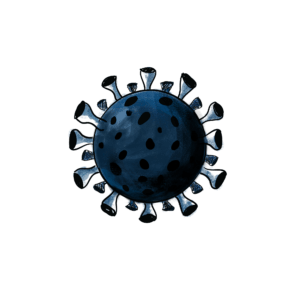
Let’s talk flu, its prevention and home remedies.
Boo-ger season is here! Let’s begin by defining flu (short term for influenza) because it’s usually misunderstood as fever or cold. Flu is a common

Part 1: were the vaccines rushed?
Short answer: no safety steps were cut.
Long answer: The drug development process is made up of several steps: 1) a preclinical trial 2) a clinical trial which is broken down into a) Phase I b) Phase II and c) Phase III.
Preclinical stage is about deciding on the desired effect of the drug and getting initial information on its efficacy and safety. The vaccine candidate is tested inside test tubes (in vitro) and in animals (in vivo). Of 100 drugs tested usually only about 32 moves to the next stage. That’s a high level of failure so it’s often hard to find financing for this phase.
The three phases of the clinical stage have different objectives. Phase 1 is about assessing the safety and tolerability of the drug in a small group of healthy people (usually has a 75.1% success rate). Phase 2 is designed to test efficacy of the drug and continue safety testing in a larger group of people (this has a 50% success rate).
Finally, Phase 3 which follows the gold standard format of trials, the randomised control trial with a large group of volunteers (ca. A few thousands usually but in the 40-50,000 range for the COVID19 vaccines) split into a placebo or control group and the vaccine candidate group. These trials are expensive, time consuming and difficult to run and aim to evaluate the risk-benefit of the drug across a cross section of the target population.
None of these steps were cut for any of the COVID19 vaccines. As it’s a pandemic and this disease is everywhere and because there is political & economic will to develop a vaccine – there were plenty of volunteers ready to be enrolled into trials and plenty of funds ready to be invested into the process. Both of which resulted in a rapid development process and enabled the deployment of the vaccines for emergency use as early as January 2021. If anything, we can be encouraged that if the money & interest were there, science could move much faster than it currently does.
Part 2, do the vaccines work and are they safe?
Short answer: Detailed studies taking place over ca. 9-10 months have shown them to be safe and effective in the fight against COVID19. Not only did the authorised vaccines reduce the chance of falling sick from COVID19 but they all seem to prevent death and hospitalisation!
Important to note that none of the vaccines injects COVID19 into the body. No major reactions were seen in the trials since April 2020 or in the 200 million vaccinations made in the real world since December 2020. Minor side effects from vaccines occur very soon after vaccinations, these include injection site pain, fever, chills and end after a few days. We cover these extensively in our articles Three Reasons Why Vaccines are Safe and 200 Million Doses Later, How Have the Vaccines Fared in the Real World.

Long answer:
AstraZeneca
The Oxford vaccine (as it’s commonly referred to) is an adenovirus based vaccine however it was earlier developed and tested for a variety of diseases including on Ebola (2014) and Zika (2016). Those trials weren’t successful at fighting disease but helped researchers test the safety of the vaccine.
ChAdOx1 was then adapted to COVID19, early clinical trials had safety issues and moved to Phase I trials in early April. Phase II/III trials began in August in four countries: UK, Brazil and South Africa and final results were published in November. In total, ca. 23,000 participants were enrolled in the study.
AstraZeneca is a 2 dose vaccine, given 28 days apart but now studies show that a 12 week break may increase vaccine effectiveness. The vaccine provides 76% protection after 1st dose, and 82% after 2nd dose (with a 12 week break). It’s shown to prevent deaths and hospitalisation by 100% and even may lower the chance of you infecting other people! Furthermore, it can be stored at normal fridge temperatures making handling it easier for those of us in the tropics.
Against the UK variant, this vaccine shows 71.4% efficacy after two doses but against the more infectious South African variant, it’s down to 22% (albeit not a large and varied trial).
Pfizer/BioNTech
As mRNA technology is highly customisable, BioNtech developed 20 candidates for early stage research as soon as Chinese laboratories released the genetic sequences of Sars-Cov-2 in Jan 2020.
As shown in the timeline below, they then teamed up with Pfizer and began Phase I and II trials simultaneously. The results were reviewed by the FDA, it then moved the best performer to Phase II / III trials enrolling 44,000 people across US, Germany, Turkey, South Africa and Brazil. They then met the objective in November 2020 and conducted safety and efficacy assessments on over 38,000 people that took part in the trials.
Pfizer/BioNTech is a 2 dose vaccine, given 28 days apart and is shown to reduce the chance of getting sick from COVID19 by 94% (i.e. vaccine efficacy is 94% after 2nd dose). It needs to be stored at -70C making it an expensive and difficult option for tropical countries such as Sri Lanka.
Moderna
The Moderna vaccine, mRNA-1273, is also based on mRNA technology. The short list of vaccine candidates was ready to enter into the research process by January 16th, an amazing 2 days after the Chinese laboratory released the genetic sequence but long before the first cases were detected in the US. Phase I trials began in mid-March with Phase II & III running concurrently from end July with 30,000 participants in the US.
Moderna is also a 2 dose vaccine, given 28 days apart, reducing the chance of developing COVID19 symptoms by 94%. It also requires cold storage but around -20C which makes it the better mRNA vaccine for Sri Lanka.
Novavax
This vaccine, NVX-CoV2373 is also 2 doses (beginning to sound familiar) 28 days apart however this is a protein subunit vaccine. That means it injects a lab made version of the outer shell (spike proteins) of the Sars-CoV-2 virus. This vaccine method is used in existing vaccines like the flu vaccines, HPV and Hepatitis B vaccines. Novavax Phase 3 trials spanned multiple countries and enrolled 30,000 people – none of whom had a serious reaction to the vaccine.
Its UK trial showed that its 89.3% effective at preventing COVID19 symptoms and its South African trial showed a 60% reduced risk against the South African variant. The Novavax vaccine is another suitable candidate for Sri Lanka given its ability to be stored at 2 to 8C.
Part 4: Do the vaccines alter my DNA?
Short answer: None of the vaccines alter your DNA. mRNA doesn’t hang around in your body for long and disintegrates after a certain short time period and as such are safer than traditional vaccines. The four main vaccines discussed here only allows your body to recreate the outer shell of the virus (a dummy version!) so your body can arm itself against it. When the real thing comes, the body is able to attack it faster now that it knows what the dummy looks like.
Long answer: The aim of a vaccine is to teach the body how to recognise the virus. When a virus infects you, it enters into your cells and uses your cells to create more versions of itself. If your immune system can’t catch it early, all havoc breaks loose. Vaccines just give your immune system a blueprint of what to expect so it can prepare itself.
None of the vaccines carries the entire viral structure. Much like our blueprint is our DNA, the virus blueprint is its DNA or RNA. We simply recreate an artificial part of this blueprint to help the body build the outer shell of the virus (or the spike proteins). Human equivalent would be to use your DNA to only recreate your skin.
mRNA creates proteins, it doesn’t create DNA. When mRNA vaccines enter your cells, it releases the mRNA. The mRNA does not enter into the nucleus where your DNA is hosted. Helpers called ribosomes come alongside the mRNA strands and like construction workers laying brick after brick following an architect’s blueprint – starts to assemble the spike proteins or dummy outer shell of the virus.
The spike proteins do not cause any harm on their own because they don’t have the ability to replicate. That ability lies within the virus’ RNA or DNA and we didn’t recreate that. The spike proteins are sent to the cell surface and held out (like waving a flag from a window) or released into the bloodstream.
Vaccines help our immune system arm up against a potential intruder. Our immune system recognises Sars-Cov-2 via the spike protein. By sending some “placebo” spike proteins we give them an early chance to get prepared. Immune cells are usually patrolling around looking for potential intruders. When these sentries come across the spike proteins, they launch an immune response.
All four vaccines activate both arms of our immune system: the innate and acquired arm. Once the immune system recognises the intruder, it will start to create antibodies to fight against it and more importantly, activate memory cells that will remember this knowledge for a time period.
Want to know if the vaccines are safe? Read the next blog!

Boo-ger season is here! Let’s begin by defining flu (short term for influenza) because it’s usually misunderstood as fever or cold. Flu is a common

As Sri Lanka rolls out its COVID19 booster program, we break down the answers to your most pressing questions. Firstly, what is a booster? A

Back to School – A Battle Between Education and COVID-19 Students are finally returning to school. But as parents, many are worried about COVID-19 safety.
Get the latest health tips delivered straight to your inbox!